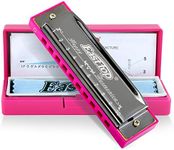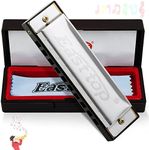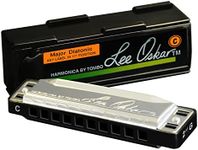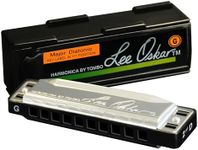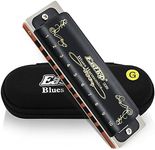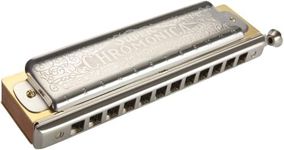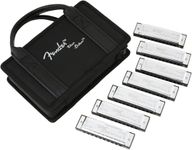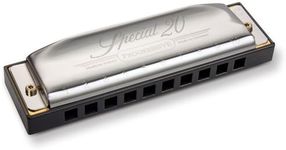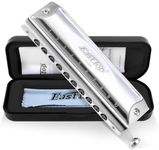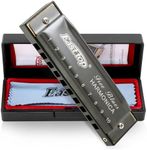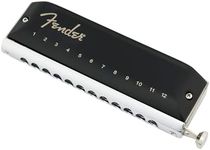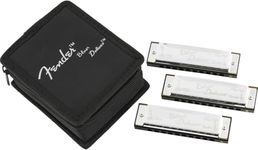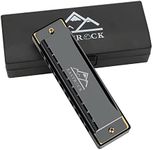Buying Guide for the Best Harmonicas
Choosing the right harmonica can greatly enhance your musical experience, whether you're a beginner or an experienced player. Harmonicas come in various types and with different features that can affect the sound and playability. Understanding these key specifications will help you make an informed decision and find the best harmonica for your needs.TypeHarmonicas come in several types, including diatonic, chromatic, tremolo, and octave. Diatonic harmonicas are the most common and are typically used in blues, rock, and folk music. Chromatic harmonicas have a button-activated slide that allows for playing all the notes in the chromatic scale, making them suitable for jazz and classical music. Tremolo harmonicas have two reeds per note, creating a vibrating sound, and are often used in traditional and folk music. Octave harmonicas also have two reeds per note but are tuned an octave apart, producing a fuller sound. Choose the type based on the genre of music you want to play and your skill level.
KeyHarmonicas are available in different keys, with C being the most common and versatile for beginners. The key of the harmonica determines the pitch of the notes it produces. If you are playing with other musicians, you will need a harmonica in the same key as the song. For blues and rock, harmonicas in the keys of A, D, and G are also popular. Consider the type of music you want to play and whether you will be playing solo or with others when choosing the key.
Number of HolesHarmonicas typically have 10, 12, or 16 holes. A 10-hole harmonica is the standard for diatonic harmonicas and is suitable for most blues, rock, and folk music. A 12-hole harmonica is common for chromatic harmonicas and offers a wider range of notes. A 16-hole chromatic harmonica provides an even greater range and is often used by advanced players for jazz and classical music. Beginners may find a 10-hole harmonica easier to start with, while more advanced players might prefer the extended range of a 12 or 16-hole harmonica.
MaterialHarmonicas are made from various materials, including plastic, wood, and metal. The material affects the tone, durability, and maintenance of the harmonica. Plastic combs are durable, resistant to moisture, and produce a bright sound, making them a good choice for beginners. Wooden combs offer a warm, rich tone but require more maintenance to prevent swelling and cracking. Metal combs are durable and provide a bright, clear sound but can be heavier. Consider your preference for tone and the level of maintenance you are willing to perform when choosing the material.
Reed TypeThe reeds in a harmonica can be made from brass, stainless steel, or other metals. Brass reeds are the most common and provide a warm, mellow tone but may wear out faster. Stainless steel reeds are more durable and produce a bright, clear sound but can be more expensive. The type of reed affects the sound and longevity of the harmonica. If you are a beginner, brass reeds are a good starting point. More experienced players might prefer the durability and sound quality of stainless steel reeds.
